
If you had told a comic book reader in the 1940s that Patsy Walker, the red-headed star of Timely's teen comics, would one day become a costumed crimefighter called "Hellcat," but also appear in a dramatic television series that not only referenced these comics but featured Patsy as an angry former child star who engaged in relations outside of marriage and also used what appeared to be an asthma inhaler to give herself super powers - the whole thing being broadcast to millions of homes equipped with personal computers, each more powerful than one hundred Univacs, all connected in a high speed exchange of data unseen of in all of human history, well, that comic book reader might think you were insane.
He'd also think this 1940s Patsy Walker story was kind of nuts, too. So I guess what comes around, goes around.
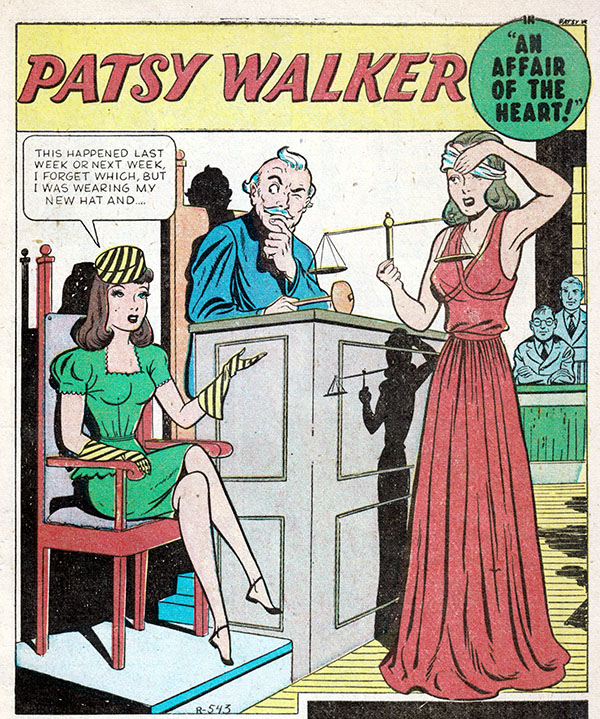
Well, looks like the law finally caught up with Patsy. Stripes with solids? Throw the book at her, judge!
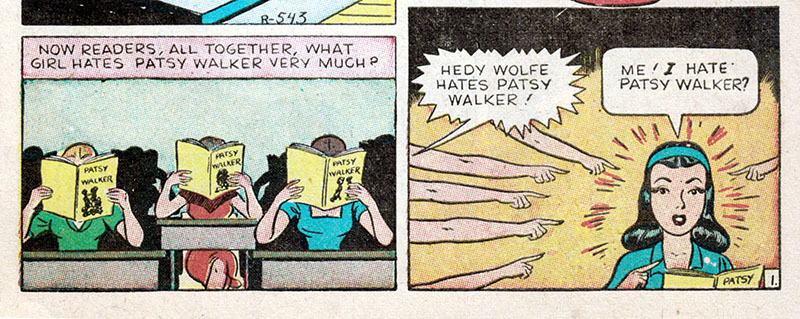
We can learn a few things from this sequence of panels. Seems that at one point comics were openly read by girls, girls who had freakishly long arms and used them to accuse Hedy Wolfe of being a hater. We also learn that Hedy Wolfe keeps her friends close and her enemies closer and that's pretty easy when all you gotta do is drop ten cents at the newsstand.
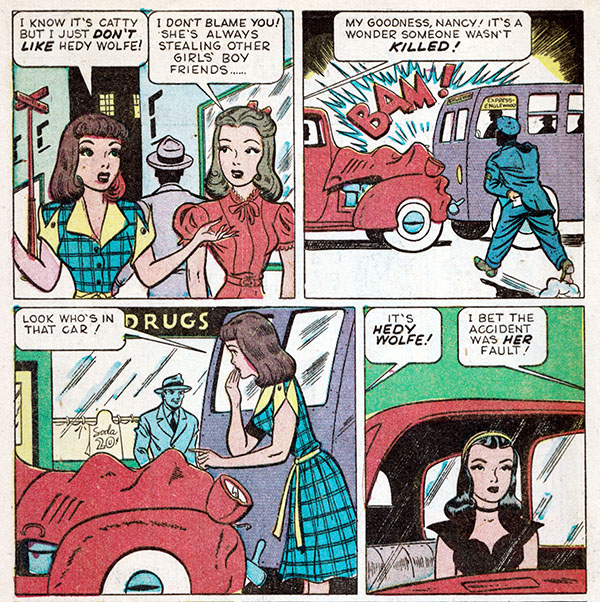
Meanwhile downtown Patsy and Nancy come across the scene of a horrific car accident involving a bus, a car with very advanced for its time crumple zones, and Hedy Wolfe, who is the calmest auto accident victim I've ever seen. Shouldn't she be clutching her neck and complaining about whiplash? Struggling to breathe after having the dashboard metal jammed against her sternum? Bleeding profusely from being hurled through the windshield? Nope, sitting quietly. Always ladylike, that's Hedy for you.

Luckily for Patsy and Nancy and the forward impetus of this story, a cute boy was involved in some capacity. Sure, we'll testify, officer! See you in boy court!
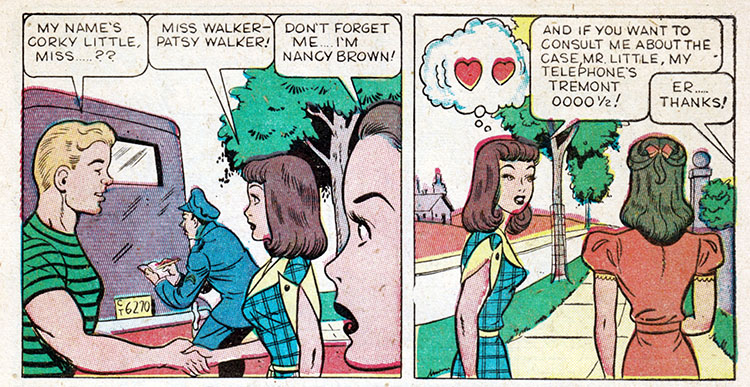
Hurling themselves at this hunky interloper, the wild teens battle for supremacy, knowing that the victor will be the one daring enough to employ the ultimate weapon - the telephone number.
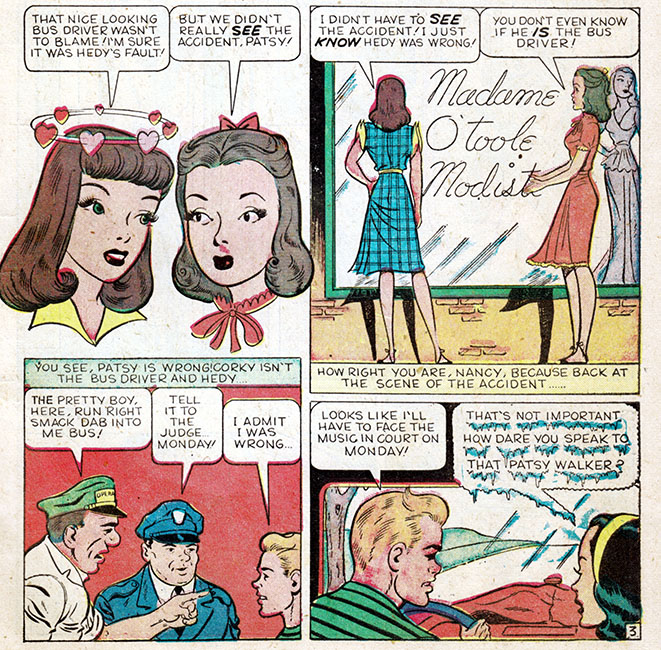
Here in this vital sequence we learn that, in spite of what the comic appeared to show us earlier, not only did Patsy and Nancy not witness the accident, they completely misunderstood who was driving what vehicle. Had they stopped to at least ask their supposed friend Hedy Wolfe if she was all right - after all, she was in a car accident! - they would have learned the truth behind what their handsome new pal was behind the wheel of.
But hey, at least the car still runs. You can't beat those old Packards!
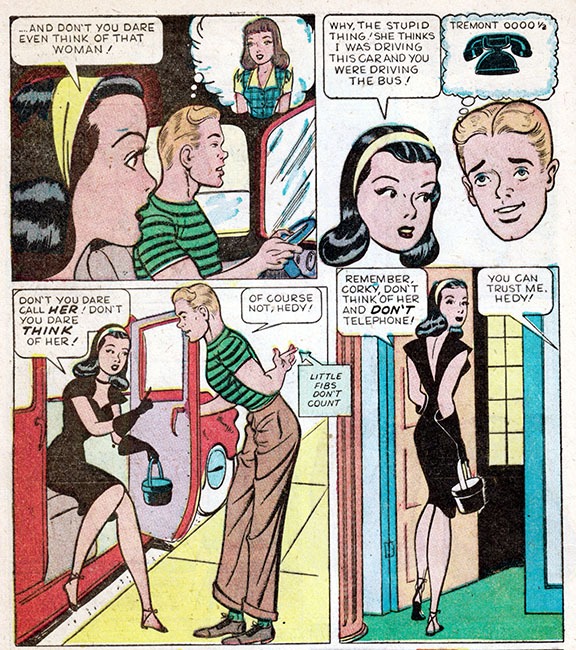
Now remember to not think about that girl that I keep telling you to not think of constantly! And don't you dare telephone her either! Let me remind you to forget her at least twelve more times!
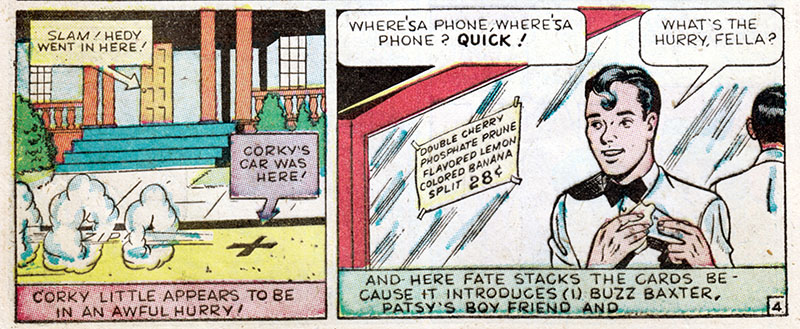
The careful reader will note that this comic seems to be filling up with captions and explanatory diagrams. Sure, we could use words and images together in a narrative fashion to tell a story in a more natural fashion, but the "show don't tell" rule wasn't invented until 1949.
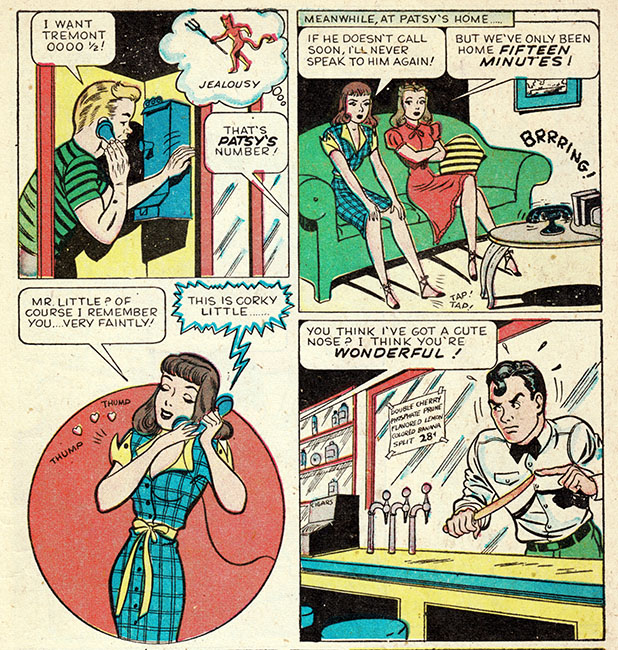
Making time with Buzz's girlfriend right in front of Buzz? Thank goodness for old fashioned telephone exchanges and the need to tell the operator which number you wanted, or this already clumsy comic would have had to work itself into further contortions to get this contrived plot moving along!
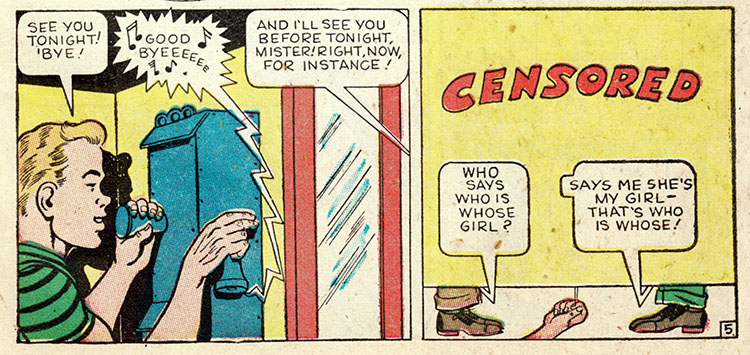
TIP FOR ARTISTS: don't feel like drawing something? Just invent a censor.

I want the kind of job where I can just leap over the counter and get into a fist fight with a customer and not get fired, that's the kind of job I want. Look, he's doing it again!
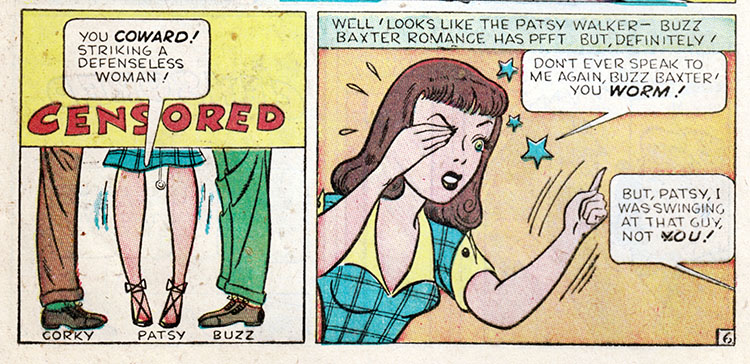
Two guys and a girl and a big CENSORED sign? No, it's not some kind of crazy sex thing, but the essence of 1940s comedy - physical abuse. What audience doesn't roar with laughter at the prospect of a woman getting punched right in the face?
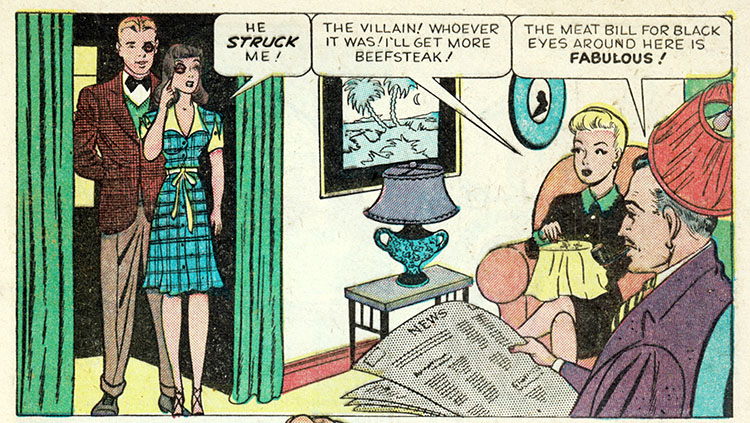
I love Dad's reaction here. Ho-hum, more assault. My daughter this time. Oh well. No need to discuss this with anyone except our butcher.
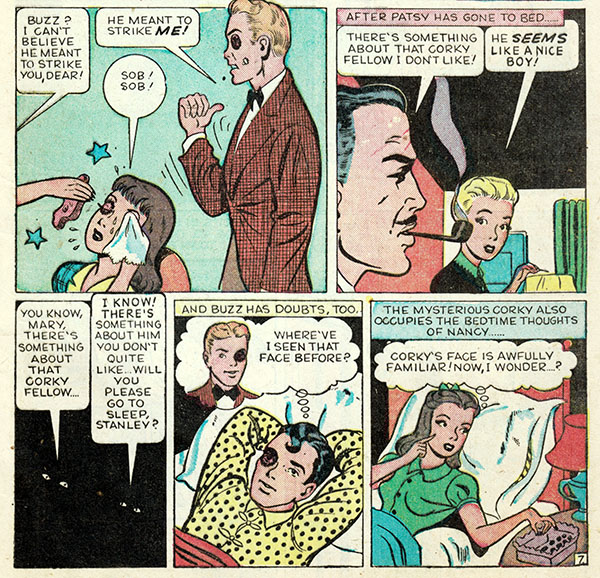
That dashing, mysterious Corky occupies the bedtime thoughts of our entire cast. I don't need to know any more, comic.
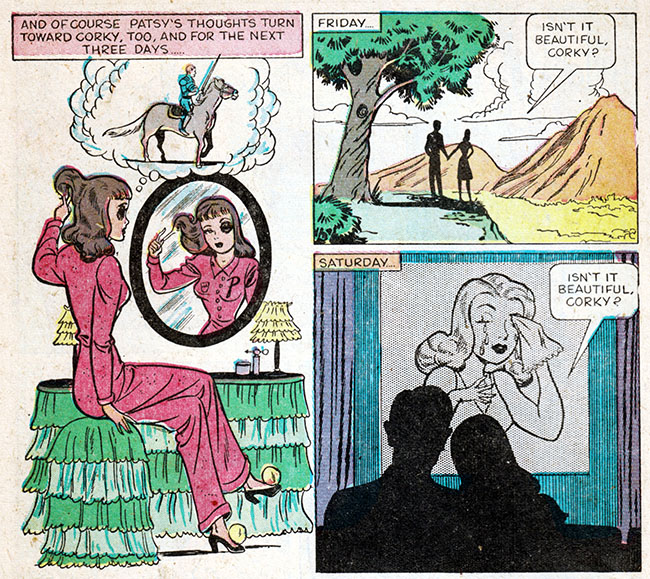
But Patsy, that lucky girl, she gets to bring her dreams into reality! I think these are actual dates. I'm pretty sure they are.
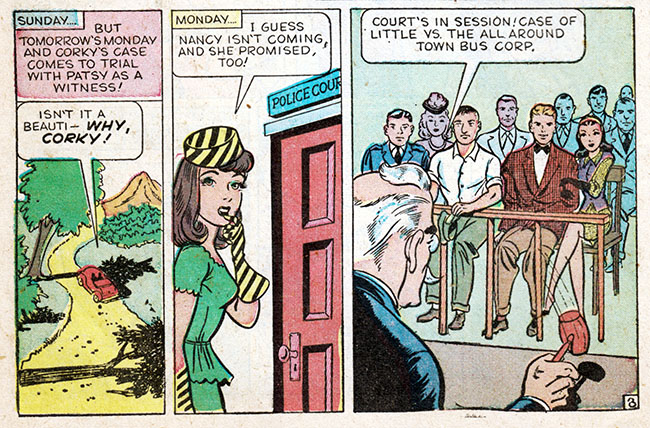
Corky getting handsy in a parked car? Yeah, these are actual dates. And three days later there they all are in court, because in comic books anything is possible, even speedy trial dates.
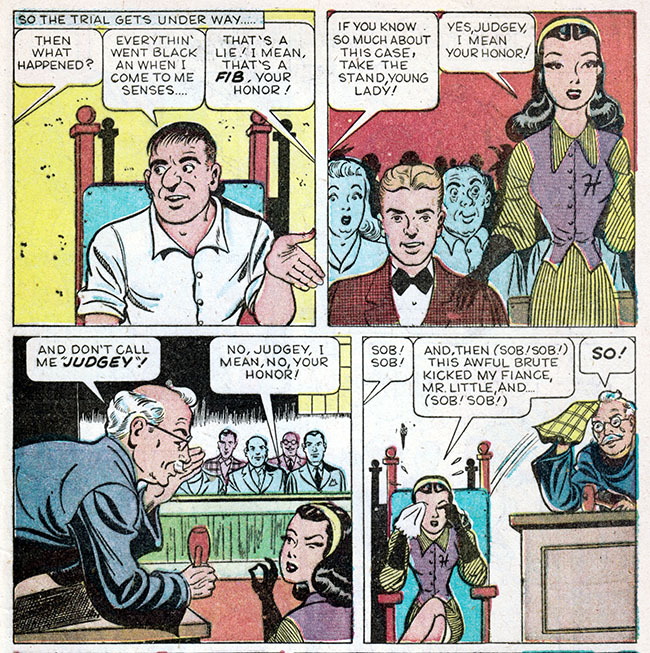
I'm gonna say that if vital witness testimony is just now coming out in trial, then both the prosecution and the defense have been asleep at the wheel. Like Corky, I guess
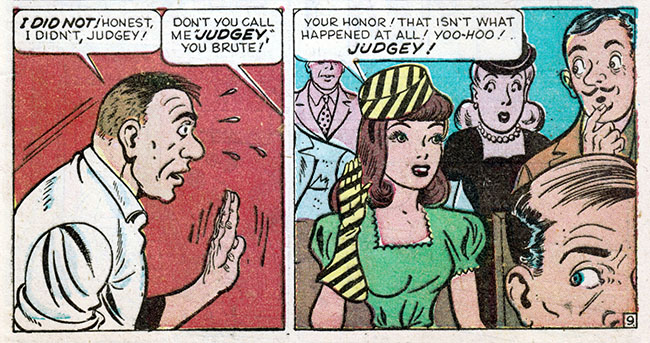
Oh great, another witness uninterviewed, more vital evidence neglected. Your honor, I call for a mistrial.
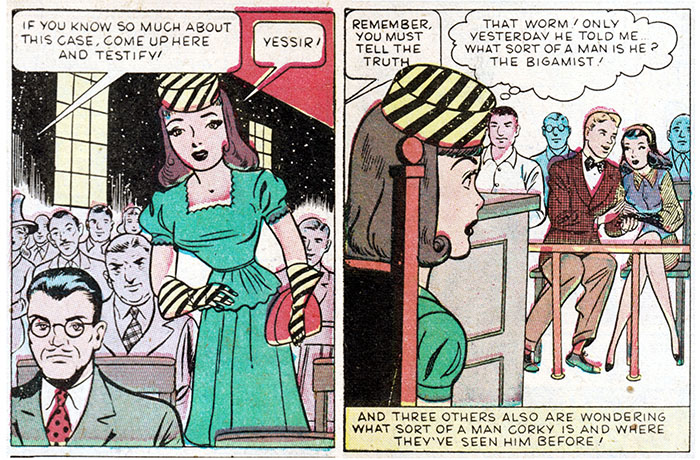
Patsy sees Hedy with Corky, and wonders about the kind of man Corky told her he is yesterday, I think. Clear, comprehensible dialogue was never a hallmark of 1940s comics.

The courteous comic book always makes sure to reiterate important plot points - like here, where our characters get an idea, symbolized by the "idea" light bulb, which is explained in the caption overhead, and in the next panel in which we see their little speed lines going into the helpfully labeled Post Office, again, reiterated by the caption that tells us they are going into the Post Office. Can we get this comic to holler louder for the people in the back?
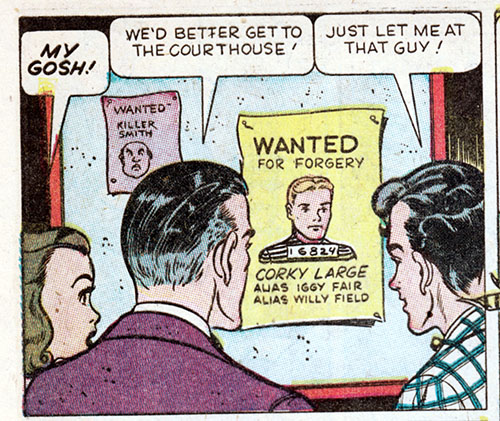
Turns out Corky is actually a wanted criminal! You'd think that a courthouse is the last place a forger on the lam would want to spend his time - especially for a minor fender-bender that isn't even a criminal trial but some kind of ridiculous comic book civil suit between a bus company and a private citizen, that's what car insurance is for, no way I'd stick around for that, so long coppers - but this dumb story insists upon a trial scene and so a trial scene we shall have.
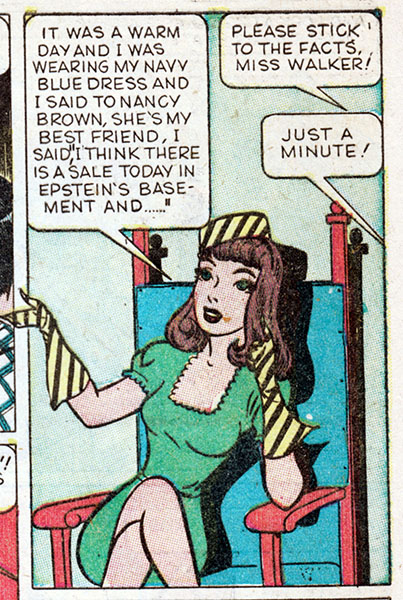
You see girls talk a lot about clothes and shopping, that's what girls talk about.

Again another piece of vital evidence rushes in the door of a trial already in progress - a trial that could have been prevented by the slightest bit of perfectly normal investigation by either party. I mean the guy is a wanted criminal already!
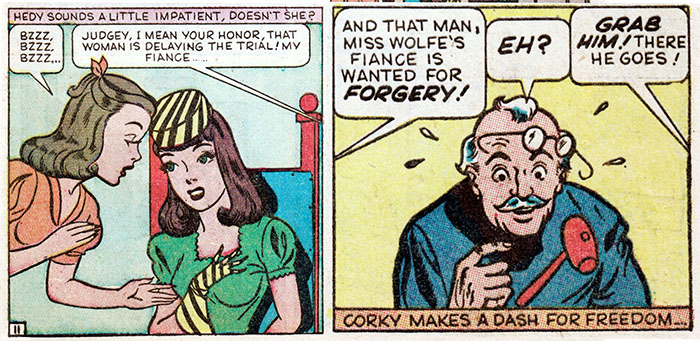
Another interesting thing about this story is how Hedy has apparently become engaged to be married to Corky, and yet this comic book dispenses with such a momentous, life-altering decision by casually mentioning it in a few captions and word balloons. Oh yeah, we're gonna get hitched and spend the rest of our lives together, just so you know, sure nobody knows Corky or his family or where he comes from or his job or anything, but we're all good with it, now on with the story, what's that, he's a forger?
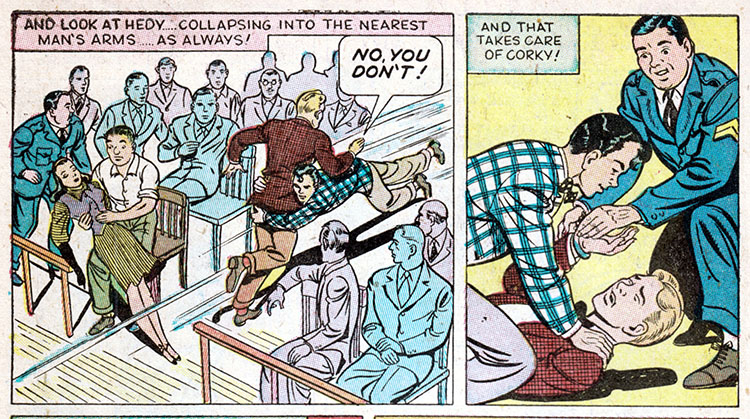
Strangled to death, Buzz saves the state the expense of a trial. Another trial, anyway.
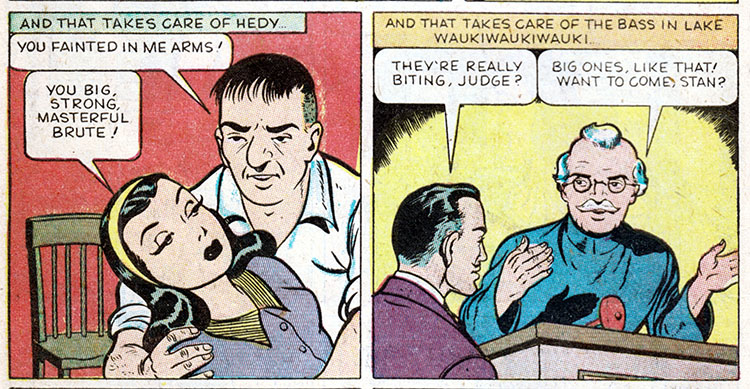
And it seems Hedy has another boy friend to get engaged to. I bet this one's a safecracker! Meanwhile Stan Lee and the judge prepare for their big fishing trip. I guess there really is somebody out there for everybody!

As we wrap up this little story, let's gape in astonishment as Buzz and Patsy walk out arm in arm, as if he didn't just punch her lights out a few pages ago. Yeah, I don't care if it was an accident, that boy needs a little anger management therapy, and maybe people around him that won't put up with assault. The butcher's happy, I guess.
PREVIOUS STUPID COMICS
PREVIOUS STUPID COMICS
BACK TO STUPID COMICS INDEX
BACK TO MAIN INDEX




























